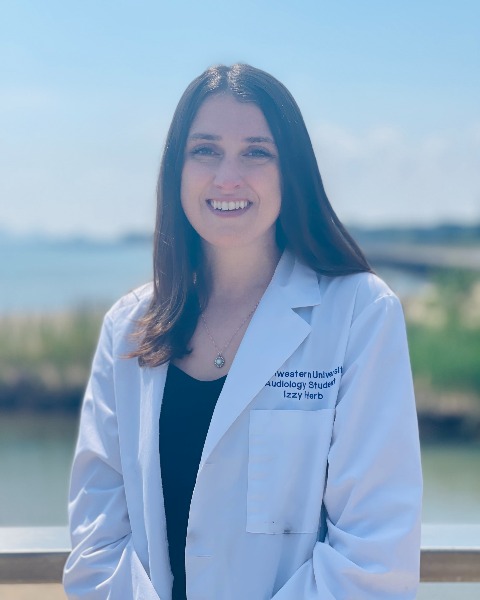Electro/physiology (E)
(PP509) Electrocochleography: Does Montage Matter?
- KM
Kailyn A. McFarlane, BS
Graduate student
Northwestern University
Chicago, Illinois, United States - EK
Emily Kidwell, BS
Doctor of Audiology Student
Northwestern University
Chicago, Illinois, United States 
Isabel N. Herb, BS/BA
Audiology Graduate Student
Northwestern University
EVANSTON, Illinois, United States- MN
Megan Nguyen
Undergraduate Student
Northwestern University, United States - JS
Jason Tait Sanchez
Associate Professor
Northwestern University
Evanston, Illinois, United States
Lead Presenter(s)
Presenter(s)
Electrocochleography (ECochG) has been demonstrated to be a robust clinical tool for surveying cochlear potentials and identifying specific cochlear/auditory nerve pathologies. However, significant recording challenges persist due to the lack of reliable normative data, electrode selection, and recording standards. The aim of this study is to determine recording parameters, specifically electrode montage, that foster optimal ECochG acquisition. Standard measures of ECochG were compared between recordings in the horizontal and vertical montages Our results will determine whether the traditional method of recording ECochGs in the horizontal montage is supported as being a more robust approach than a vertical electrode placement paradigm.
Summary:
Electrocochleography (ECochG) has held clinical utility in audiology for decades as it can be used to differentially diagnose specific cochlear/auditory nerve pathologies (e.g., Meniere’s disease). However, electrodes that produce the most robust recordings (e.g., extra- and trans-tympanic) are uncomfortable for the patient and difficult to place. Thus, gold-foil tiptrodes are a common alternative. It is therefore important to consider other recording parameters that can maximize the magnitude of evoked responses, such as electrode montage. Based on theoretical assumptions, horizontal and vertical electrode montages emphasize different components of evoked potentials. This is largely due to the complex relationship between the anatomical site of origin relative to the electrode placement and the orientation of the evoked response “dipole” spread within the auditory pathway.
Indeed, research shows evidence that the horizontal montage is optimal for ECochG recording due to the emphasis of the compound action potential (cAP; Ferraro and Durant, 2006), a primary measure of interest in the ECochG. The analysis of the ECochG recording depends on a robust cAP morphology relative to the summating potential (SP; Ferraro and Durant, 2006). Through our investigation, we seek to add to the body of literature that supports a horizontal montage in the recording of the ECochG, or to suggest that there is viable evidence to support using a vertical montage as an alternative. In doing so, we aim to provide recording parameters that optimize fast/early evoked potentials in normal hearing adults as well as updated normative data in this population.
Forty young adults between the ages of 18-30 will be tested. Participants will be screened for normal audiometric hearing (≤ 20 dB HL 0.25-8kHz) and middle ear function (tympanometry). Electrocochleography will be collected using Intelligent Hearing Systems SmartEP platform. Responses will be evoked by a 90 dB HL broadband 100-μs click at a rate of 9.1/s. Stimuli will be presented in the right ear through a gold-foil tiptrode that will also serve as the reference electrode. For the horizontal montage, the active (non-inverting) electrode will be placed on the left mastoid (M1) and a ground electrode will be placed on the high center forehead (Fz). For the vertical montage, the active and ground electrode placements will be switched (i.e., M1G, Fz+). SP and cAP amplitudes (relative to baseline) and the SP/AP ratio will be compared between montage recordings using paired t-tests. Data collection is set to begin within the month of October. Data collection and analysis will be complete by the February 15th AAA deadline.
Based on previous literature, we predict that the horizontal montage will produce more robust ECochG morphology compared to vertical montage recordings (e.g., greater SP and AP amplitudes, earlier and more identifiable SP and AP latencies, and smaller SP/AP ratios). The data collected will support clinically relevant recommendations for optimal ECochG acquisition.
Learning Objectives:
- Describe how electrode montage affects electrocochleography measures and apply optimal recording parameters based on theoretical foundations and empirical support.
